Get ready to embark on a juicy journey exploring the vibrant world of mangoes. In this comprehensive guide, we will dive into the various types of mangoes, uncover their incredible health benefits, discover the best ways to store and enjoy them, and learn some exciting mango-related tips and tricks (plus an unexpected downside to these tasty fruits)!
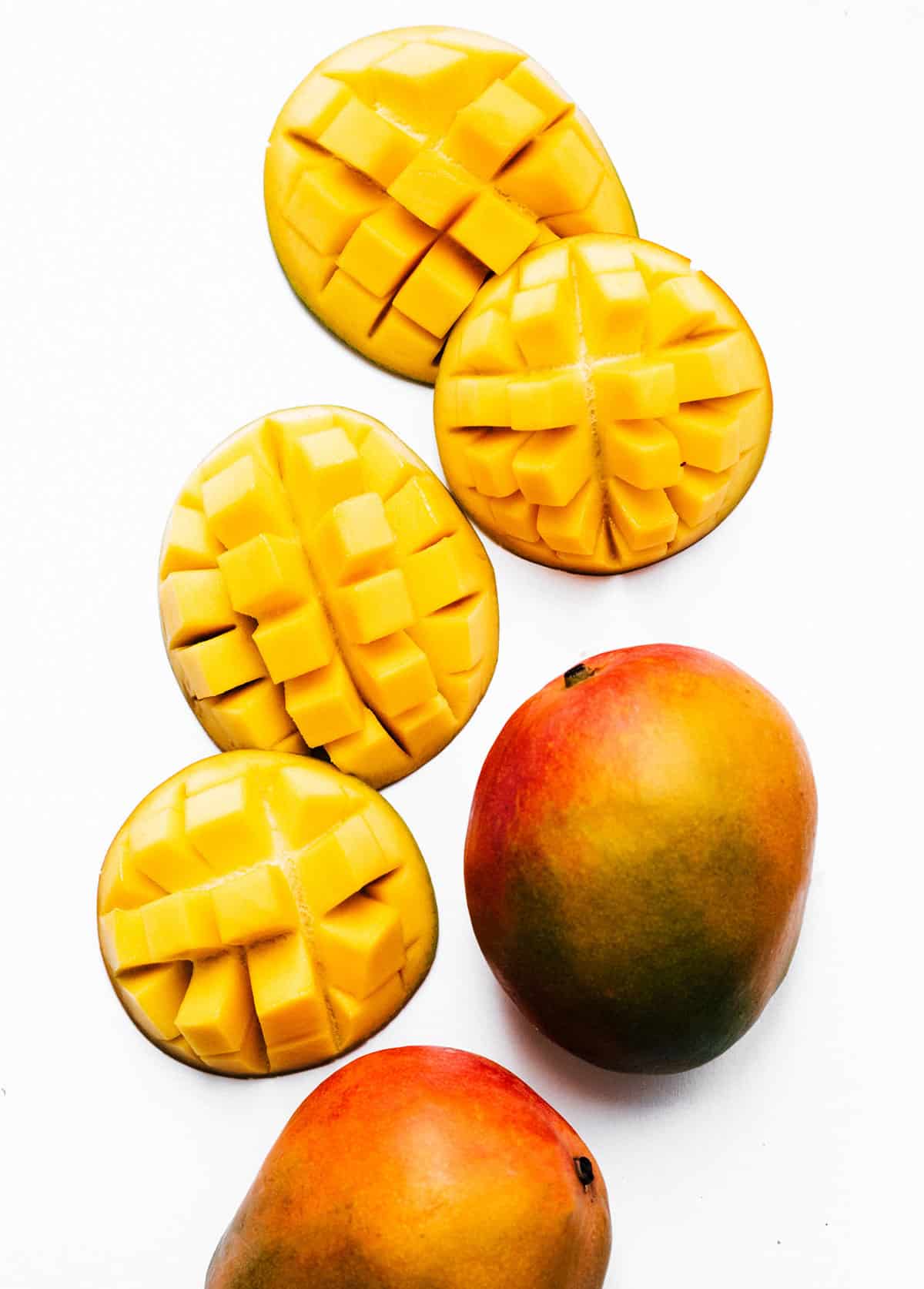
Where are mangoes from?
Originally from South Asia, mangoes made their way across the tropics and into America in 1880. Today, mangoes are the most commonly eaten fruit in the world, with India being the greatest supplier (creators of the delicious mango lassi!).
In America, we get mangoes from a lot of different countries across Central and South America, to include Mexico, Ecuador, Peru, Guatemala, Brazil, and Haiti, as well as from our own backyard in California and Florida. What does this mean? Due to varying growth calendars, we can pretty much have mangoes all year round!
We love eating mango raw, or working it into tropical mango recipes, like this mango salsa and this mango chutney (sooooo good on a bagel with cream cheese!)
How to pick a good mango
Choose mangoes based on aroma and touch rather than appearance. A ripe mango smells sweet and rich and is slightly soft. Color has less to do with ripeness, as this can vary depending on the type of mango. Mangoes can be a greenish fruit to deep red!
Mangoes are a stone fruit, meaning it has one hard seed surrounded by tasty fruit (peaches, cherries, and plums are all stone fruits as well). As with other stone fruits, mangoes will continue to ripen after they’ve been picked.
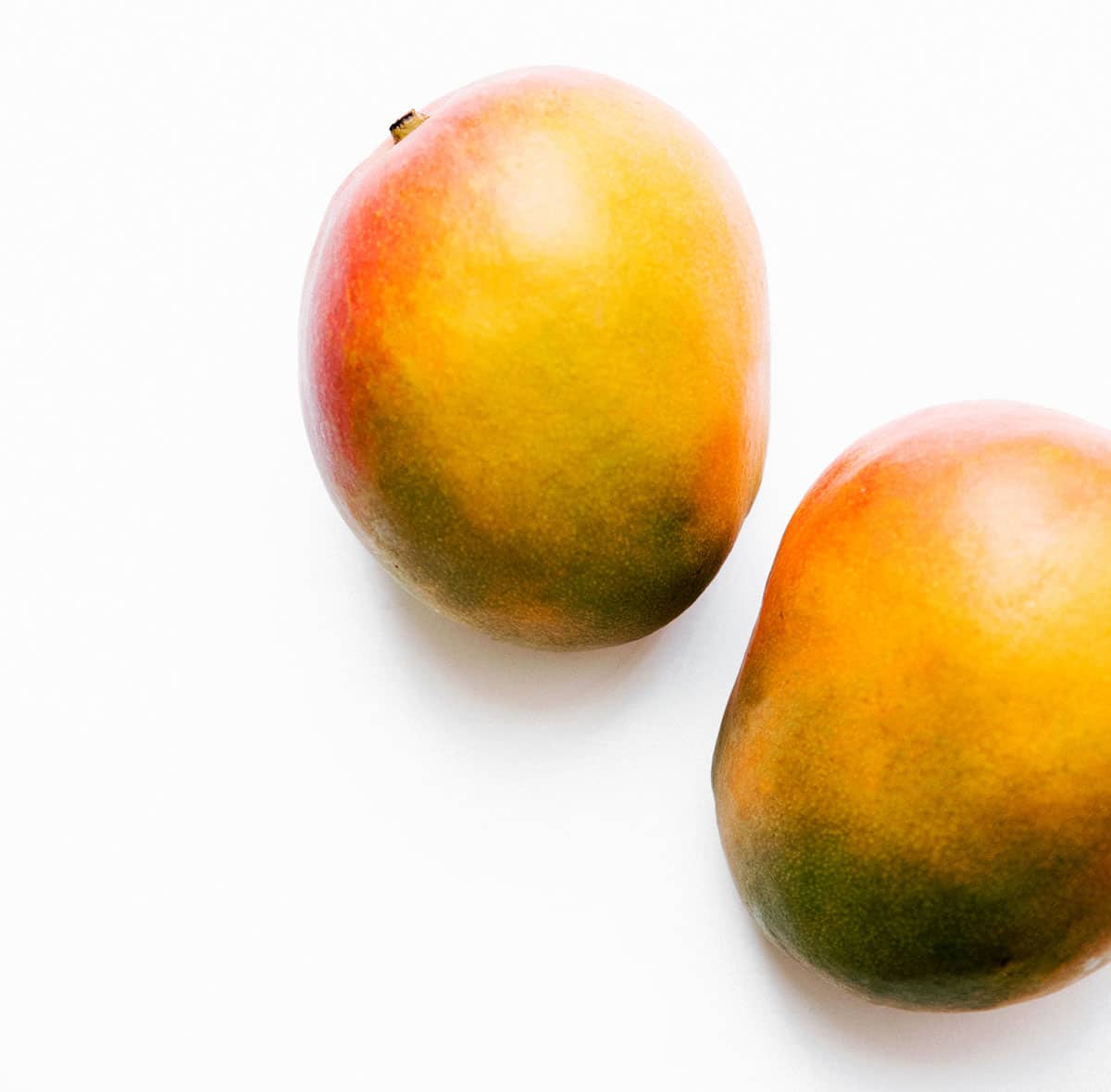
Types of mangoes
There are many variaties of mangoes, some being better for drying, some good as a puree, and others perfect eaten fresh. Here are a few of the most popular varieties of mango:
- Haden: The mother of all mangoes. Literally. Most mangoes grown in the U.S. today are a descendent of this mango variety, which popped up in Florida in the early 1900s.
- Tommy Atkin: The most popular mango. It’s red/green/yellow and has a mild sweet flavor. It’s also pretty fibrous, which accounts for its firmness.
- Ataulfo: These guys are small, yellow, and sweeeet. They have a more smooth texture due to a lack of fibers, and have an almost creamy mouthfeel.
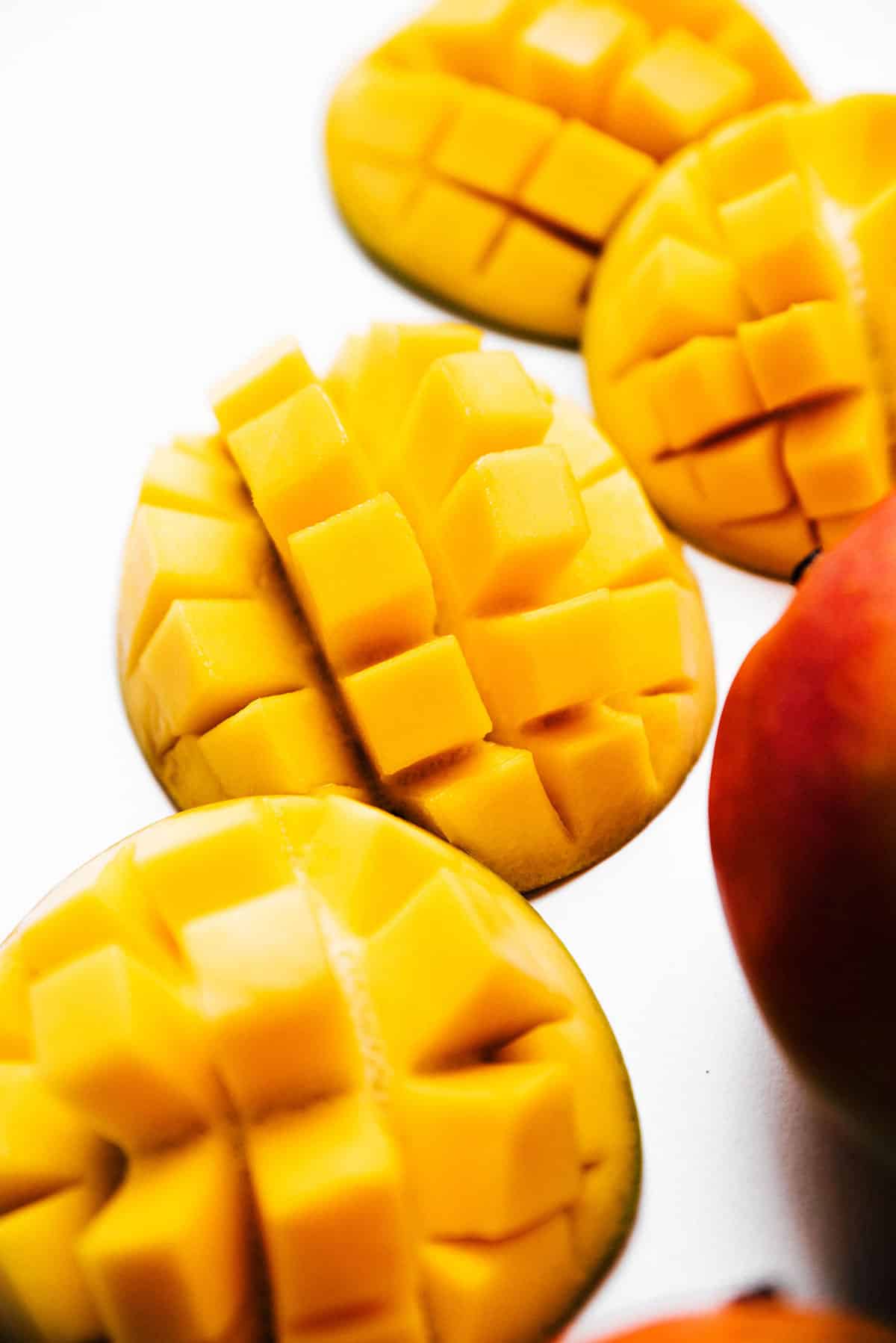
How to cut mangoes
How do you cut mangoes most easily and quickly? Like this! (Grab our complete guide to cutting mango here 👈).
- Peel the mango entirely
- Cut the two “cheeks” off the mango
- Dice each cheek into cubes
How to store mangoes
Store mangoes at room temperature until they are soft, then move them to the refrigerator. You can also store them frozen, either whole or precut. Frozen mango is better for use as a puree or in smoothies.
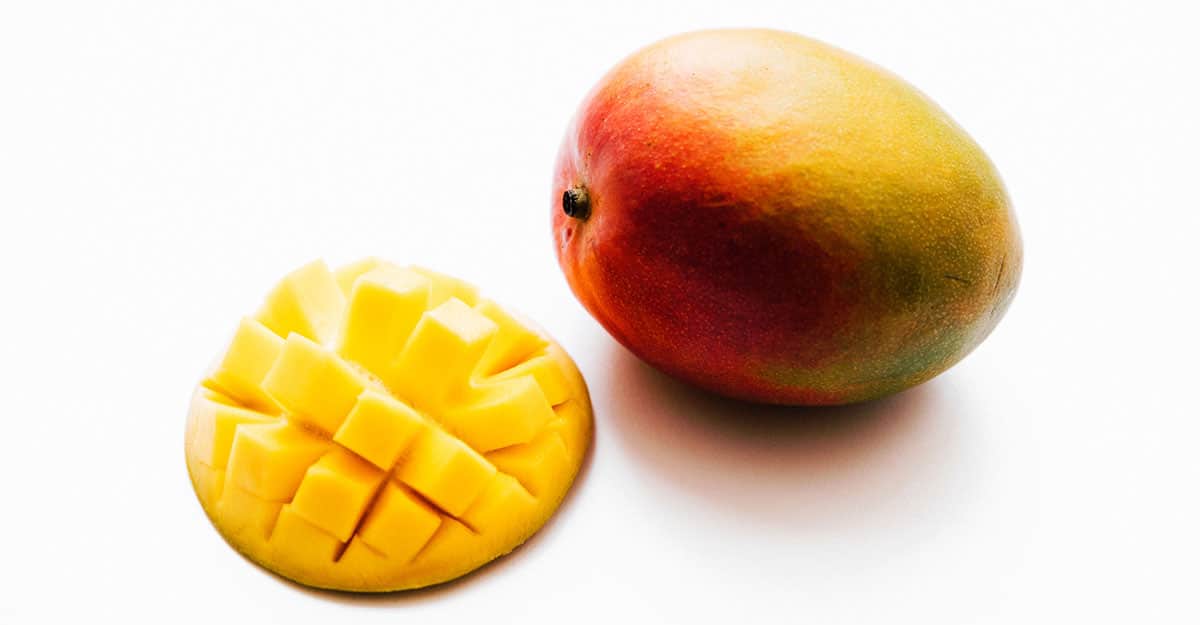
Allergy to Mango Skins
The skin of the mango is a common allergen (one that I had the pleasure of discovering while on a Hawaiian vacation). The skin contains urushiol, the same compound found in poison ivy that causes an itchy rash. To avoid an itchy mouth and lips, remove the skin prior to eating the mango.
Mango Nutrition
Mangoes are not only delicious but also highly nutritious. They are rich in vitamins A and C, which play crucial roles in supporting a healthy immune system and promoting good eye health. Mangoes are also a good source of dietary fiber, providing digestive benefits and helping to maintain healthy digestion. The following nutrition is per 1 cup (165g) of diced, raw mango.
Calories in mango: 107
As with most fruits, mangoes are not super-low calorie due to their natural sugars.
Carbohydrates in mango: 28g
Mangoes are not a low carb food because they contain high amounts of natural sugars (it’s what makes them so sweet and tasty!)
Fiber: 3g
Mangoes are a good source of fiber, and have 12% of your Daily Value (DV). This means that mangoes can can make you to feel full, helping you to eat less and lose weight.
Protein: 1g
As with most fruits, mangos are not particularly high in protein.
Fat: 0g
As with most fruit, mango is fat-free.
76% Daily Value of Vitamin C
1 cup of mango contains almost all of the vitamin C that you need in a day! This antioxidant helps maintain your immune system as well as helps to create collagen.
25% Daily Value of Vitamin A
Mango is also a good source of Vitamin A, which is essential in many components of healthy vision, as well as immunity!
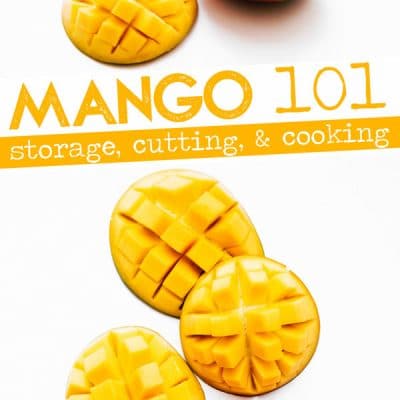
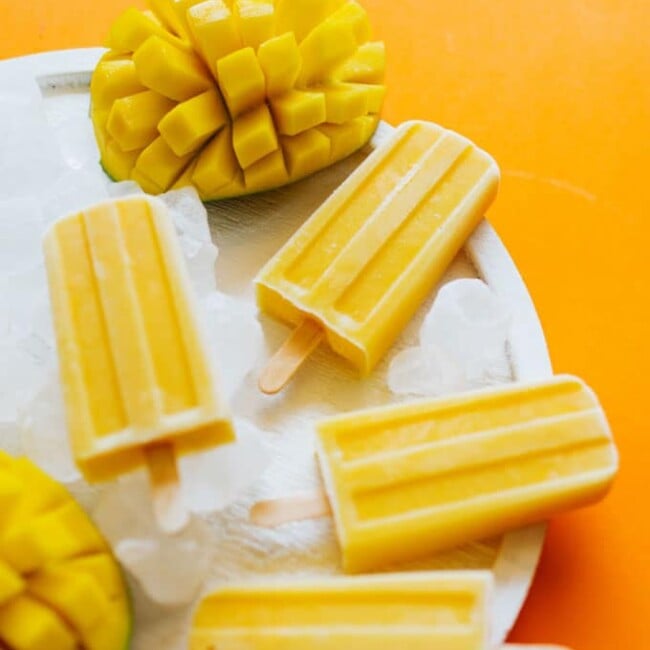
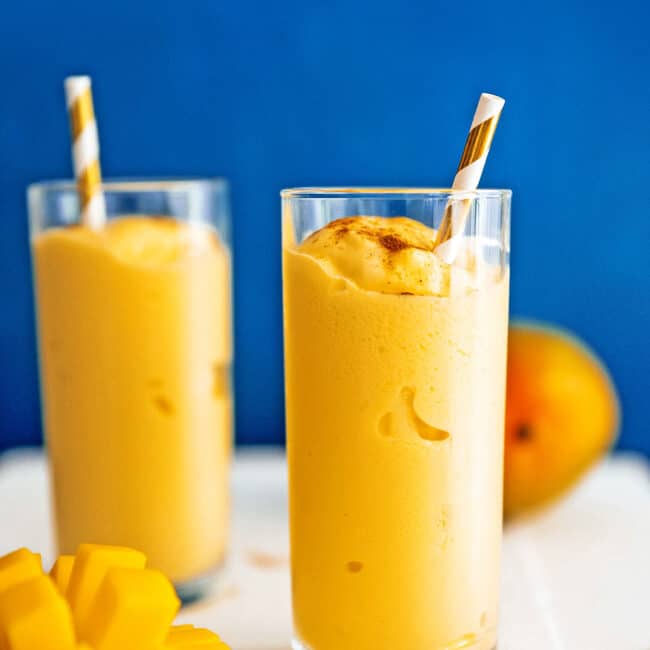
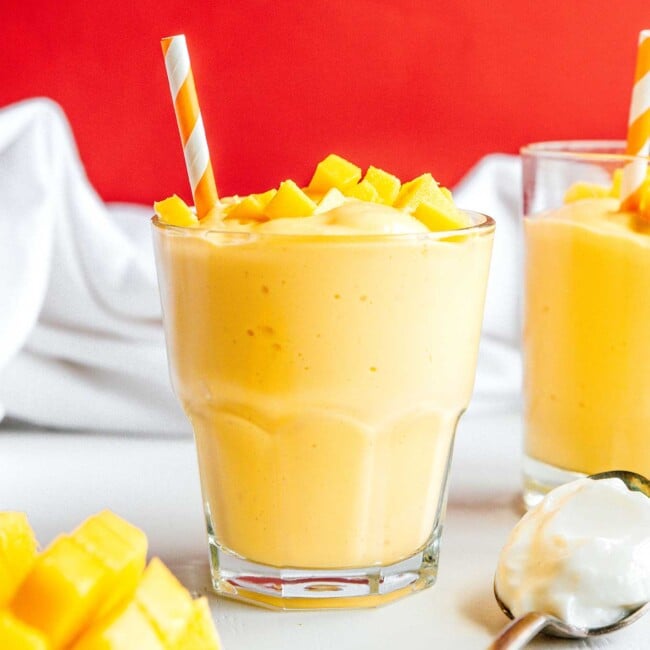
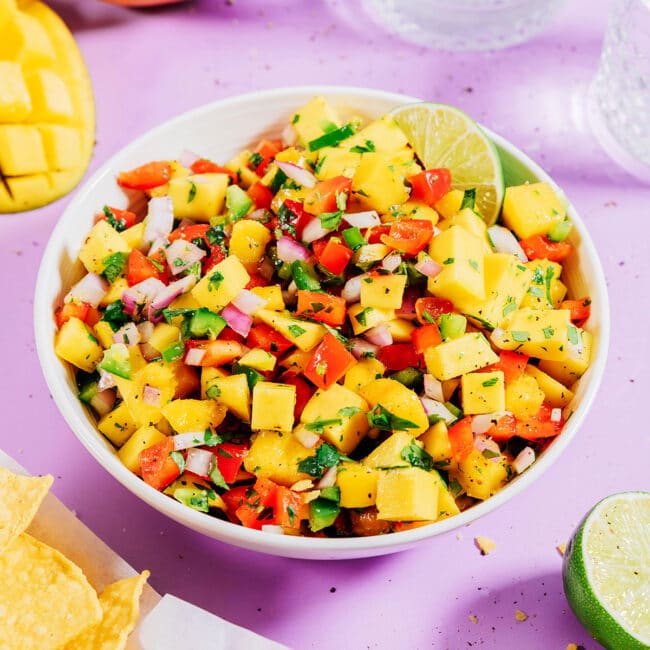
Ziiar N. Vululleh says
Thanks for the information
Patty Sutherland says
I ate a mango, skins and all…Didn’t know… Will I get sick????
Sarah says
Probably not! The allergy is only in some people (I happen to be allergic to everything, so I wasn’t surprised when I was allergic to the skin too).
Lorae says
When I shake one of the mangos I bought today, the pit moves like it’s completely detached from the flesh. What does this mean? Old, ripe, not ripe?
Sarah says
So strange! I’ve never had this happen, but I would guess it means it’s pretty old.
Memphis says
How can I tell if a mango is bad to eat (like when bananas are mostly dark brown inside) ?
Sarah says
It will be overly soft and smell a bit fermented!
Leann says
My mango has started to get brown spots but is still really hard. Why?
Sarah says
Hmm I’m not sure actually! I would still wait until it’s slightly soft. The spots could perhaps just be on the outside.
Douglas Coady says
when I buy mango’s they feel ripened on the outside but when I peel them they are brown all the way to the seed?
Sarah Bond says
It sounds like they are actually overripe!
Isuwa Jacob says
Pls how can I go about mango butter
Sarah Bond says
Here is a recipe you may like!
Joan Swafford says
Loved your article. Love mangos. Can’t wait to try some of your recipes.